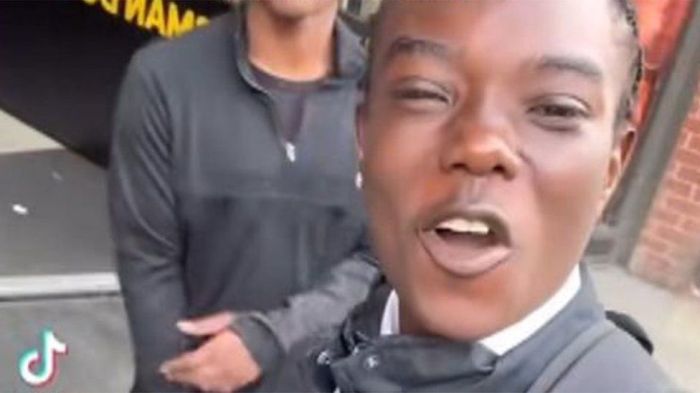
Ever wondered about the science behind a perfectly executed prank? From harmless japes to elaborate schemes, prank videos have taken over the internet, evolving from simple hidden camera gags to complex social experiments. We’re diving headfirst into the world of online pranks, exploring their popularity, the psychology behind the laughter, and the ethical considerations that come with pulling off the perfect (and safe!) prank.
This isn’t just about watching funny clips; we’ll analyze the trends, dissect the humor, and examine the impact of social media on this ever-evolving form of entertainment. Get ready for a rollercoaster ride through the wild world of prank videos!
Popularity and Trends in Prank Videos
Prank videos have evolved significantly since their early days on platforms like YouTube, becoming a multi-billion dollar industry influencing content creation across various social media channels. Their popularity hinges on a potent cocktail of humor, surprise, and often, a degree of vicarious thrill for the viewer. This evolution reflects changing technological capabilities, audience preferences, and the ever-shifting landscape of online entertainment.
The evolution of prank videos is intrinsically linked to the evolution of the platforms themselves. Early prank videos, often low-budget and relying on simple setups, found a home on YouTube in the mid-2000s. These often involved relatively harmless pranks played on friends or family. The rise of smartphones with increasingly sophisticated cameras and editing software democratized prank video creation, leading to a surge in user-generated content.
TikTok, with its short-form video format and emphasis on virality, further accelerated the trend, favoring quick, impactful pranks that could capture attention in seconds. Instagram Reels and YouTube Shorts followed suit, creating a highly competitive landscape where originality and creativity are key to success.
Popular Types of Prank Videos
Currently, several types of prank videos dominate the trends. These aren’t mutually exclusive categories, and many successful pranks blend elements from several. For instance, “social experiments” often incorporate elements of hidden camera pranks. The most prevalent categories include hidden camera pranks (often involving reactions to unexpected situations), social experiments (testing people’s reactions to moral dilemmas or social norms), and elaborate, often cinematic pranks involving complex setups and significant resources.
Another significant trend is the rise of “revenge pranks,” though these often face criticism for potentially crossing ethical boundaries.
Success Rates of Different Prank Video Styles
Harmless pranks, generally those involving minor surprises or playful tricks, tend to have higher rates of positive engagement. Viewers appreciate the lighthearted nature and lack of potential harm. Elaborate pranks, while potentially generating higher view counts due to their spectacle, often face greater scrutiny. If the prank goes wrong, causes significant distress, or is perceived as unethical, the negative backlash can outweigh the initial popularity.
The success of a prank video is not solely measured by views, but also by likes, shares, comments, and the overall sentiment expressed in the comments section. A prank that goes viral but attracts overwhelmingly negative comments might be considered less successful than a video with fewer views but significant positive engagement.
Viewership and Engagement Metrics of Successful Prank Videos
Analyzing successful prank videos reveals some consistent patterns in viewership and engagement. For example, a prank video featuring MrBeast, a popular YouTuber known for his elaborate and philanthropic stunts, might garner tens or even hundreds of millions of views. His videos typically involve significant investment in production quality and often incorporate charitable elements, enhancing positive engagement. Conversely, a smaller-scale prank video by an independent creator might achieve several thousand views, with engagement heavily dependent on factors such as originality, humor, and the effectiveness of promotion across social media platforms.
A simple metric to consider is the engagement rate (likes + comments + shares / total views). Higher engagement rates suggest a more impactful and positively received video. For instance, a video with 1 million views and 100,000 likes, comments, and shares has a 10% engagement rate, indicating high audience interaction. This is significantly higher than a video with 10 million views but only 100,000 likes, comments, and shares (1% engagement rate).
While viewership is important, a high engagement rate indicates a more impactful and memorable prank.
Types of Prank Videos and Their Appeal
Prank videos, a staple of online entertainment, encompass a vast spectrum of styles and targets, each appealing to different senses of humor and psychological triggers. Understanding these variations sheds light on the enduring popularity of this genre. The appeal often stems from a complex interplay of surprise, schadenfreude (a feeling of pleasure derived from another’s misfortune), and the vicarious thrill of experiencing something daring without personal risk.
The humor in prank videos is multifaceted, ranging from slapstick to sophisticated social commentary. The effectiveness of a prank often depends on its execution, the target’s reaction, and the overall context. Furthermore, the ethical implications of pranks are crucial, demanding careful consideration by both creators and viewers.
Categorization of Prank Videos Based on Audience and Humor Style
Prank videos can be broadly categorized based on their target audience and the type of humor employed. For example, pranks targeting children often utilize slapstick and visual gags, emphasizing physical comedy and exaggerated reactions. Conversely, pranks aimed at adults might incorporate more sophisticated humor, such as wordplay, irony, or social satire. The use of hidden cameras allows for a unique perspective, enhancing the comedic effect and often adding a layer of suspense for the viewer.
Psychological Aspects of Humor in Prank Videos
The enjoyment derived from watching prank videos is often linked to several psychological factors. Surprise, a key element in most successful pranks, triggers a release of endorphins, contributing to feelings of amusement. Schadenfreude, while ethically complex, plays a significant role, particularly in pranks where the target experiences minor inconvenience or embarrassment. The vicarious thrill of witnessing a risky or daring act without experiencing the consequences firsthand also contributes to the appeal.
Furthermore, the humor can be amplified by the unexpectedness of the reaction and the relatable nature of the situation. For instance, a prank involving a common everyday occurrence can resonate with viewers more strongly than a highly improbable or fantastical scenario.
Examples of Prank Videos Utilizing Social Commentary or Satire
Some prank videos transcend simple amusement and venture into social commentary or satire. These pranks often use humor to highlight societal issues, stereotypes, or hypocrisy. For example, a prank involving a staged interaction between a customer and a service provider might satirize poor customer service or highlight inequalities in power dynamics. Similarly, a prank that subtly challenges societal norms or expectations can spark discussions and encourage critical thinking among viewers.
The effectiveness of such pranks hinges on their ability to be both entertaining and thought-provoking.
Ethical Considerations in Prank Videos
It’s crucial to consider the ethical implications of various prank video categories. While some pranks are harmless and purely for entertainment, others can cause emotional distress, embarrassment, or even physical harm. The line between acceptable and unacceptable pranks is often blurred, making ethical considerations paramount.
| Prank Type | Target Audience | Humor Style | Ethical Concerns |
|---|---|---|---|
| Classic Slapstick | General Audience | Physical Comedy | Potential for physical injury, risk of humiliation |
| Social Experiment | Adults | Observational Humor, Satire | Informed consent, potential for manipulation, misrepresentation |
| Hidden Camera Prank | Variable | Surprise, Reaction-based | Privacy concerns, potential for emotional distress, lack of consent |
| Good-natured Teasing | Friends, Family | Lighthearted, Playful | Minimal ethical concerns if consent is given and boundaries are respected |
The Role of Social Media in Prank Video Culture
Social media platforms have fundamentally reshaped the landscape of prank videos, transforming them from niche entertainment to a global phenomenon. The ease of creation, distribution, and virality offered by these platforms has fueled a massive increase in prank video production and consumption, creating a complex interplay between creators, viewers, and the algorithms that govern online content.Social media algorithms significantly influence the reach and success of prank videos.
Platforms like YouTube, TikTok, and Instagram utilize complex algorithms to determine which videos are shown to which users, prioritizing content that generates high engagement (likes, shares, comments, watch time). A prank video that receives a surge of initial engagement is more likely to be promoted to a wider audience, creating a snowball effect that can lead to virality.
Conversely, videos that fail to attract early attention may struggle to gain traction, regardless of their quality or originality.
Social Media Trends and Prank Video Creation
Trends on social media heavily influence both the creation and consumption of prank videos. Popular challenges or formats, often initiated by influential creators, quickly inspire copycat videos and variations. For example, the “Yanny or Laurel” audio illusion spread rapidly, leading to countless prank videos utilizing the ambiguous sound to elicit reactions. Similarly, the rise of “reaction” videos has created a demand for pranks designed to capture memorable responses.
This constant evolution driven by trends ensures a continuous supply of fresh content, keeping the prank video genre dynamic and engaging for viewers.
Examples of Viral Prank Videos and Their Impact
Several prank videos have achieved phenomenal viral success, demonstrating the power of social media in amplifying content. The “Invisible Box” prank, for instance, involved a seemingly empty box causing people to trip and fall. Its simple yet effective premise, combined with the satisfying element of surprise, led to millions of views and countless imitations across various platforms. Another example is the “Water Bottle Flip Challenge,” a seemingly simple challenge that spread like wildfire, inspiring countless variations and generating significant engagement.
These viral videos illustrate the key ingredients for success: relatable scenarios, surprising elements, and the potential for user-generated content through replication and adaptation.
Hypothetical Social Media Campaign: “Reverse Pranks”
A hypothetical social media campaign could promote a new style of prank video: “Reverse Pranks.” This campaign would focus on pranks that are ultimately helpful or beneficial to the victim, creating positive interactions and fostering a sense of community. The campaign hashtag, #ReversePrank, would encourage users to share their own creative reverse pranks, emphasizing kindness and unexpected acts of generosity.
The campaign visuals would depict heartwarming scenes of people being pleasantly surprised by these reverse pranks. Influencer collaborations would be key, encouraging prominent pranksters to participate and promote the positive message. The campaign’s success would be measured by the number of positive interactions, the spread of the hashtag, and the overall shift towards more positive and community-focused prank content.
This campaign aims to redefine the prank video genre, moving beyond solely humorous or shocking content to explore the potential for pranks to spread joy and kindness.
Production and Ethical Considerations of Prank Videos
Creating a successful and ethical prank video requires careful planning and execution, balancing humor with responsibility. The process involves several key stages, from initial ideation to final post-production, all while prioritizing the safety and well-being of everyone involved. Ignoring ethical considerations can lead to negative consequences, including legal repercussions and reputational damage.
Planning and Executing a Successful Prank Video
The planning phase is crucial. A well-defined script, including clear objectives and potential outcomes, helps ensure a smooth production. This includes identifying the target audience, selecting the prank’s location and time, and assembling the necessary equipment (cameras, microphones, etc.). A detailed shot list can streamline filming, preventing wasted time and resources. Rehearsals, even for seemingly simple pranks, can help identify and address potential problems before filming begins.
Post-production involves editing the footage, adding music and sound effects, and ensuring the final product is engaging and funny. A successful prank video is well-paced, clearly shows the reaction, and maintains a lighthearted tone throughout. For example, a popular prank video might involve a carefully staged scenario, such as a hidden camera capturing reactions to a seemingly impossible event, edited to highlight the surprise and humor.
Obtaining Consent from Participants in Prank Videos
Informed consent is paramount. Participants should be fully aware that they are being filmed for a prank video and understand how the footage will be used. This includes explaining the nature of the prank, its potential impact, and how their privacy will be protected. Consent should be documented, preferably in writing or through video recording of the consent process itself.
This protects both the prankster and the participants from potential misunderstandings or legal issues. Failure to obtain consent can lead to serious consequences, including lawsuits for invasion of privacy or emotional distress. For instance, a prank involving a public figure without their consent could result in legal action and damage the creator’s reputation.
Ensuring the Safety and Well-being of All Involved Parties
Safety should be the top priority. The prank should never put anyone at physical or emotional risk. This includes avoiding pranks that could cause injury, embarrassment, or humiliation. The environment should be safe and controlled, with appropriate precautions taken to prevent accidents. For example, if a prank involves a potentially hazardous situation, safety measures like having a first-aid kit and a spotter present are essential.
Moreover, the emotional well-being of participants should be considered. The prank should be lighthearted and not cause undue stress or anxiety. The video should be edited to avoid showcasing any negative emotional reactions in an exploitative way.
Ethical Responsibilities of Prank Video Creators
A checklist for ethical prank video creation includes: obtaining informed consent, prioritizing safety, respecting privacy, avoiding harmful or exploitative content, and ensuring the video’s content is legal and does not infringe on any intellectual property rights. Creators should be mindful of the potential impact of their videos and avoid perpetuating harmful stereotypes or engaging in any form of bullying or harassment.
Transparency and accountability are also key; creators should be prepared to take responsibility for the consequences of their actions. This includes addressing any negative feedback or complaints promptly and professionally. Failure to adhere to these ethical guidelines can lead to significant negative consequences for the creator, potentially impacting their career and reputation. Consider the potential legal and social repercussions before filming any prank.
A strong ethical framework is essential for maintaining the integrity and credibility of the prank video community.
Prank Videos and Entertainment & Humor

Prank videos occupy a unique niche in the vast landscape of online entertainment. Their appeal stems from a potent blend of surprise, relatable awkwardness, and often, genuinely funny situations. They offer a form of vicarious thrill, allowing viewers to experience the playful chaos without directly participating, fostering a sense of shared amusement and community. This participatory aspect, fueled by social media sharing and reactions, significantly contributes to their popularity and longevity.Prank videos utilize a variety of comedic techniques to achieve their humorous effect.
The unexpected nature of the prank itself is often the primary source of humor, playing on the element of surprise and the resulting reactions of the victims (or, more accurately, participants).
Comedic Techniques in Prank Videos
Prank videos draw upon a range of comedic techniques, including slapstick, observational humor, and irony. Slapstick humor relies on physical comedy and exaggerated reactions, often resulting in comical falls, collisions, or exaggerated expressions. Observational humor finds its roots in everyday situations, highlighting the absurdity of ordinary events. Irony, often employed through the unexpected twist or reveal at the end of a prank, creates a humorous juxtaposition between expectation and reality.
The best prank videos often blend these techniques seamlessly, creating a layered and multi-faceted comedic experience. For example, a prank involving a seemingly harmless object unexpectedly causing a chain reaction of comical events combines slapstick (the physical chaos) with observational humor (the absurdity of the situation).
Comparison with Other Comedic Content
Prank videos differ from other forms of comedic content, such as stand-up comedy or sitcoms, in their participatory and unscripted nature. Stand-up relies on the comedian’s delivery and carefully crafted jokes, while sitcoms utilize written scripts and established characters. Prank videos, in contrast, often feature unscripted reactions and unpredictable outcomes, lending them a sense of spontaneity and authenticity that other formats often lack.
However, they share similarities with hidden camera shows, which also rely on surprise and unscripted reactions, though prank videos are often more focused on smaller-scale, individual interactions.
Social Commentary Through Prank Videos
While primarily intended for entertainment, prank videos can subtly or directly deliver social messages or commentary. For example, a prank highlighting the prevalence of distracted driving could raise awareness about road safety through humorous means. Similarly, pranks showcasing the kindness of strangers or the generosity of individuals can promote positive social values. The humorous framing can make these messages more accessible and engaging to a wider audience than a purely didactic approach.
A successful example might involve a prank where a person pretends to be in distress, revealing the helpfulness of bystanders, thereby subtly promoting empathy and community spirit.
Visual and Auditory Elements Contributing to Comedic Effect
The comedic effect in prank videos is significantly enhanced by careful consideration of visual and auditory elements.
- Visual Elements: Exaggerated expressions and reactions from participants, unexpected visual gags, slow-motion replays of key moments, and creative editing techniques all contribute to the overall comedic impact. The use of close-ups on facial expressions can amplify the humorous reactions, while creative editing, such as fast cuts or freeze-frames, can heighten the sense of surprise and absurdity.
- Auditory Elements: Sound effects, background music, and the participant’s vocal reactions are all integral to the comedic effect. Well-placed sound effects can enhance the physical comedy, while music can build suspense or emphasize the comedic timing. The genuine laughter or surprised exclamations of participants add to the authenticity and overall hilarity of the situation. A sudden, loud sound effect during a moment of tension can amplify the comedic impact.
The Future of Prank Videos
The world of prank videos, a constantly evolving landscape of laughter, surprise, and sometimes controversy, is poised for significant shifts in the coming years. Technological advancements, changing social norms, and the ever-hungry appetite for online entertainment will all play a role in shaping the future of this popular genre. We can expect to see both exciting new opportunities and considerable challenges for pranksters and viewers alike.Technological advancements will fundamentally alter how prank videos are created and consumed.
The increasing sophistication of video editing software, for instance, will allow for more elaborate and visually stunning pranks, pushing the boundaries of creativity and realism.
Technological Advancements and Prank Video Production
The integration of augmented reality (AR) and virtual reality (VR) technologies presents exciting possibilities. Imagine pranks that seamlessly blend the real and digital worlds, creating truly immersive and unforgettable experiences for both the prankster and the victim (with their consent, of course!). For example, a prank might involve seemingly teleporting an object across a room using AR overlays, or creating a virtual haunted house experience using VR headsets.
The use of AI-powered editing tools could also automate certain aspects of video production, such as adding special effects or generating subtitles, making it easier for independent creators to produce high-quality content. Furthermore, drone technology will allow for more dynamic and creative camera angles, capturing pranks from unique and unexpected perspectives. This will increase the visual appeal and excitement of the pranks.
Evolving Social Norms and Ethical Considerations
The increasing awareness of ethical considerations surrounding pranks will necessitate a shift towards more responsible and consensual content creation. The days of pulling pranks that could cause significant emotional distress or physical harm are likely numbered, as audiences become more discerning and platforms become stricter in enforcing community guidelines. We will see a rise in pranks that focus on lighthearted fun and playful interactions, prioritizing the well-being of all involved.
The emphasis will shift from shocking or humiliating the victim to creating shared laughter and positive memories. This is already evident in the growing popularity of “collaborative pranks,” where participants are actively involved in the planning and execution of the prank, ensuring everyone is comfortable and enjoying the experience. This trend emphasizes consent and mutual respect.
The Impact of Social Media Algorithms and Trends
Social media algorithms will continue to play a significant role in shaping the popularity and reach of prank videos. Creators will need to adapt their content strategies to optimize for these algorithms, focusing on creating videos that are engaging, shareable, and aligned with trending topics. This could lead to a greater emphasis on short-form video content, optimized for platforms like TikTok and Instagram Reels, which favor quick, punchy, and visually stimulating content.
We can expect to see more creative use of trending sounds, challenges, and hashtags to increase visibility and reach. The success of prank videos will increasingly depend on their ability to resonate with specific online communities and trends. For example, a prank video related to a popular video game might achieve significantly higher viewership than a more generic prank.
Challenges and Opportunities for Prank Video Creators
The increasing competition within the prank video genre presents a significant challenge for creators. Standing out from the crowd will require creativity, originality, and a strong understanding of audience preferences. However, this competition also presents opportunities for creators who can successfully differentiate themselves through unique styles, high-quality production values, and strong community engagement. Successful creators will need to focus on building a loyal following by consistently delivering high-quality content and interacting with their audience.
Diversification of content, exploring different prank styles and formats, will also be crucial to maintain audience engagement and avoid creative stagnation. Monetization strategies will also need to evolve, with creators exploring alternative avenues beyond traditional advertising, such as brand collaborations and merchandise sales.
Summary

So, there you have it – a whirlwind tour of the world of prank videos! From their humble beginnings to their current reign on social media, these comedic creations continue to entertain, challenge, and sometimes even inspire. Remember, while the laughs are contagious, responsible and ethical prank creation is key. So, go forth and create, but always with consideration and a dash of harmless fun!
FAQ Compilation
What’s the legal line with prank videos?
It’s crucial to avoid anything illegal or that could lead to injury or property damage. Always get consent (where appropriate) and understand local laws regarding pranks.
How can I make my prank video go viral?
Originality, high-quality production, and engaging content are key. Targeting trending topics and using relevant hashtags can also boost visibility.
What are some good prank ideas that are safe and funny?
Classic harmless pranks like switching sugar and salt, or using silly string, are always winners. Remember, the goal is laughter, not tears!
Are there any famous pranksters I should check out?
Many YouTubers and social media stars have built careers on pranks! Research and find channels that align with your sense of humor.






